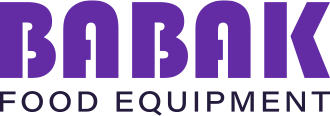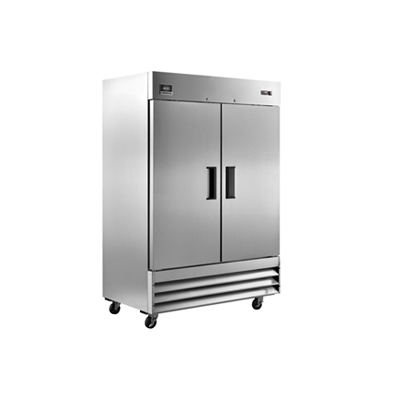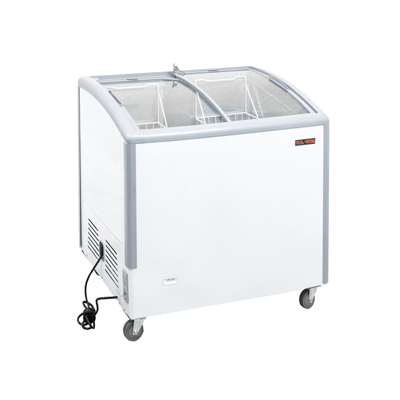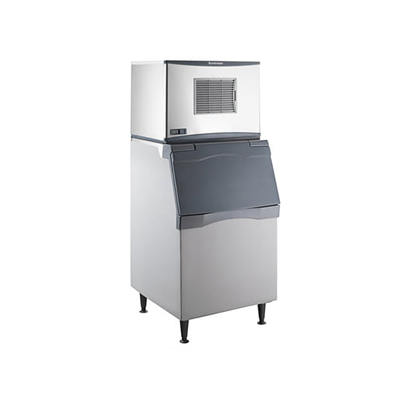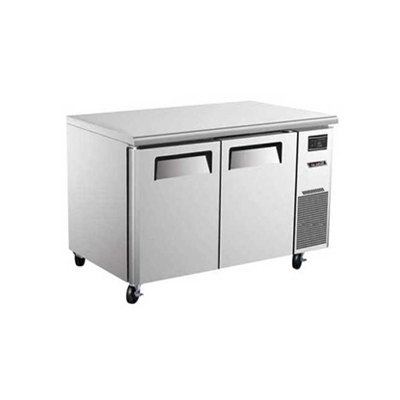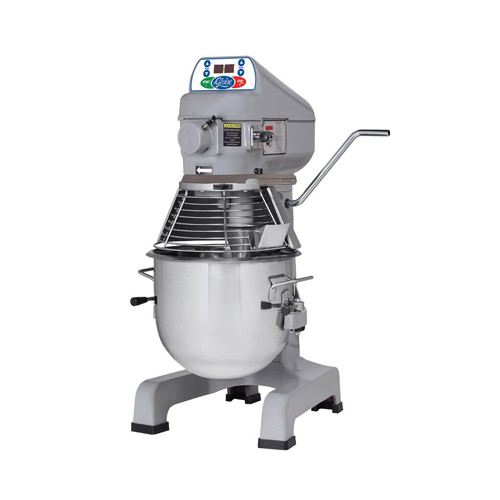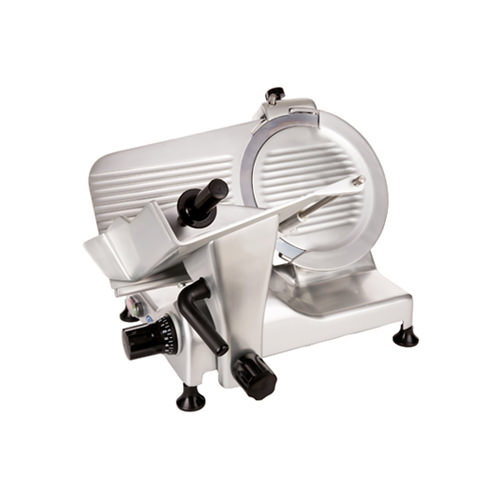Find the Best Commercial Deep Fryer for Your Restaurant

Did you know that over 40% of restaurants experience equipment failure within the first five years of operation? A reliable deep fryer is essential for maintaining consistent food quality and safety in any busy kitchen. Whether you’re running a small deli or a high-volume restaurant, selecting the right fryer can make all the difference.
In this guide, we’ll walk you through everything you need to know to choose the perfect fryer for your needs. From understanding different types of fryers to maintaining them properly, we’ll cover it all. You’ll learn about key components, energy efficiency, and how to ensure your fryer performs reliably for years to come.
This guide is backed by industry experts and real-world data, ensuring you get the most accurate and helpful information. At Babak Food Equipment, we’re committed to helping you make informed decisions that benefit your business.
Understanding Commercial Deep Fryers
Choosing the right fryer for your kitchen can be daunting, but understanding the basics can simplify your decision. A commercial fryer is designed for heavy-duty use, unlike home models, ensuring consistent performance in busy environments.
Core Components and Functions
The essential parts include a durable oil tank, precise temperature controls, and efficient filters. These components work together to maintain oil quality and even cooking temperatures.
| Component | Function | Benefit |
|---|---|---|
| Oil Tank | Holds cooking oil | Large capacity for high-volume use |
| Temperature Control | Regulates heat | Ensures consistent frying results |
| Filters | Cleans oil | Extends oil life and quality |
Why Stainless Steel Matters
Stainless steel construction offers durability and ease of cleaning, crucial for maintaining hygiene in a commercial kitchen. It resists corrosion, ensuring longevity.
Whether you’re running a small deli or a large restaurant, the right fryer can enhance efficiency and food quality. Understanding these components helps in making an informed choice.
Identifying Your Restaurant’s Frying Needs
Your menu and service volume are key factors in selecting the right fryer. If French fries are a staple, for instance, you’ll need a fryer that can handle high demand without compromising quality. Consider how often your fryer will be used during peak hours—this will help determine the size and type of equipment you need.
For restaurants with limited space, an electric countertop deep fryer might be the perfect solution. These models are compact yet powerful, ideal for preparing items like fries, onion rings, or chicken tenders. If you’re serving a high volume of fried foods, however, a larger capacity fryer may be necessary to keep up with demand.
When choosing a fryer, think about your business needs. Do you need a unit that can handle continuous use, or something for occasional frying? Electric countertop models are great for smaller operations, while larger floor models are better suited for high-volume restaurants. Matching your fryer’s capacity to your menu and service volume ensures efficiency and consistent food quality.
Exploring Fryer Types: Electric vs Gas
When it comes to choosing the right fryer for your kitchen, understanding the differences between electric and gas models is crucial. Both types have unique benefits and drawbacks that can significantly impact your kitchen’s efficiency and food quality.
Commercial Electric Deep Fryers
Electric fryers are ideal for kitchens without a gas line. They offer precise temperature control and are known for their energy efficiency. These models are compact, making them perfect for smaller spaces, and often come with features like automatic shut-off for safety. For instance, the Anets electric fryer is a popular choice among Canadian restaurants due to its reliability and ease of use.
Commercial Gas Deep Fryers
Gas fryers, on the other hand, are preferred for high-volume kitchens. They heat up quickly, which is essential during peak hours. Although they require a gas line and more complex installation, they often lower operational costs in the long run. Many chefs appreciate the quick temperature recovery of gas fryers, ensuring consistent frying results.
| Feature | Electric Fryers | Gas Fryers |
|---|---|---|
| Heat-Up Time | Slower | Faster |
| Energy Efficiency | Higher | Lower |
| Maintenance | Easier | More Complex |
| Cost | Lower Initial Cost | Higher Initial Cost |
Evaluating Fryer Capacity and Size
Determining the right size and capacity for your kitchen’s needs is crucial for efficiency and food quality. The capacity of a fryer is measured by its oil volume, which directly impacts how much food it can cook per hour. For high-volume restaurants, a larger capacity is essential to keep up with demand.
Understanding Volume and Output Requirements
Countertop fryers typically hold between 6 to 30 liters of oil, ideal for smaller operations. Floor models, on the other hand, can contain up to 45 liters, making them suitable for larger kitchens. The relationship between fryer size and output is straightforward: more oil means more food can be cooked at once, which is vital for busy environments.
For gas fryers, propane usage is a key consideration. Propane fryers are highly portable and often used in outdoor settings, making them a great choice for events or catering. However, they require proper ventilation and safety precautions. When considering a gas fryer, ensure your kitchen has the necessary setup or budget for installation.
Physical design elements like sturdy legs ensure stability, preventing accidents in a bustling kitchen. Measure your available space carefully to ensure the fryer fits comfortably, leaving at least 15 cm of clearance around the sides and back for proper air circulation. This not only improves safety but also maintains efficiency.
Matching your fryer’s size to your kitchen’s output needs ensures smooth operations and consistent food quality. Whether you’re running a small deli or a large restaurant, the right capacity and design will make all the difference. For more guidance on choosing the perfect model, visit our comprehensive guide.
Fryer Configuration Options: Countertop and Floor Models
When it comes to equipping your kitchen with a deep fryer, the configuration is just as important as the type of fryer itself. Whether you opt for a countertop or floor model depends on your kitchen’s layout, menu demands, and available space. Both options have their unique advantages, and understanding these can help you make the right choice.
Countertop Deep Fryer Benefits
Countertop models are a star choice for smaller kitchens or those with limited space. They are compact, easy to install, and can be placed on any sturdy countertop. These fryers are ideal for small restaurants, bars, or food trucks, offering convenience without compromising on performance. Their space-saving design makes them a practical solution for kitchens where every inch counts.
A key benefit of countertop fryers is their ease of use and maintenance. They often come with features like automatic shut-off, making them safer and more convenient for busy kitchens.
Freestanding Floor Fryers
Floor models are the star of high-volume kitchens, offering larger capacities and faster cooking times. These fryers are built for durability and can handle the demands of a busy restaurant. They are ideal for establishments that need to cook large quantities of fried foods consistently. Floor fryers often come with advanced features like programmable controls and efficient oil filtration systems, which enhance cooking performance and oil longevity.
As noted by a leading chef in Toronto, “Floor fryers are a must for any restaurant that takes fried foods seriously. They offer the capacity and power needed to keep up with high demand.”
| Feature | Countertop Fryers | Floor Fryers |
|---|---|---|
| Space Requirements | Compact, ideal for small spaces | Larger, requires dedicated floor space |
| Capacity | Smaller oil volume, suitable for low to medium demand | Larger oil volume, ideal for high-volume kitchens |
| Maintenance | Easier to clean and maintain | More complex but durable construction |
| Use Case | Perfect for small restaurants, bars, and food trucks | Best for large restaurants and high-volume operations |
Choosing between countertop and floor models ultimately depends on your kitchen’s specific needs. If you’re looking for a space-saving solution with ample power, countertop fryers are a star choice. For high-volume operations, floor fryers offer the capacity and efficiency required to keep up with demand. Both configurations ensure that your kitchen can deliver high-quality fried foods consistently.
French fry cutterscan also enhance your kitchen’s efficiency, ensuring perfectly sliced potatoes every time.
Key Features to Look For in a Fryer
When selecting a fryer, certain features stand out as essential for achieving consistent results and maintaining efficiency. These features not only enhance performance but also contribute to better food quality and safety.
Temperature Control and Filtration
Precise temperature control is vital for ensuring your fried foods are cooked evenly. Look for models with advanced temperature management systems, which maintain the ideal frying temperature between 350°F and 375°F. This consistency is crucial for preventing undercooked or overcooked food.
Effective oil filtration is another critical feature. A robust filtration system extends the life of your cooking oil, reducing the need for frequent changes. This not only saves money but also maintains the quality of your fried dishes. Some models come with automatic filtration, making maintenance easier and more efficient.

When evaluating fryers, consider models like the electric deep fryer, which offers precise digital controls and efficient filtration. Similarly, gas floor fryers often include advanced features that enhance both temperature management and oil quality. These features ensure your kitchen operates smoothly, delivering high-quality food consistently.
Deep Fryer Performance, Efficiency, and Output
Energy efficiency is a cornerstone of modern kitchen operations, and your fryer plays a pivotal role. Understanding how BTU ratings and energy-efficient designs impact your operational costs can lead to significant savings over time.
Energy Efficiency and BTU Ratings
BTU (British Thermal Units) ratings are a measure of your fryer’s energy consumption. A higher BTU generally means faster heating, which can be beneficial during peak hours. However, it’s essential to balance BTU with energy efficiency to avoid inflated utility bills. For instance, an electric deep fryer might have a lower BTU rating but offer superior energy efficiency, making it a cost-effective choice for many restaurants.
Natural gas fryers, while powerful, often have higher BTU ratings and may be less energy-efficient than their electric counterparts. However, advancements in technology have narrowed this gap. Some models now feature premix burners that optimize gas and air mixtures, achieving impressive efficiency rates.
ENERGY STAR® certified fryers are designed to reduce energy consumption without compromising performance. These models can lower your operational costs and may even qualify for rebates. For Canadian restaurants, where energy costs can be substantial, investing in an energy-efficient fryer is a smart long-term decision.
When comparing electric and natural gas fryers, consider your specific needs. Electric models are ideal for kitchens prioritizing energy efficiency and lower maintenance, while natural gas fryers excel in high-volume settings where quick heat recovery is crucial. Both options can deliver exceptional performance when chosen wisely.
Improved efficiency doesn’t just save money—it also enhances food quality. By maintaining consistent temperatures and reducing oil degradation, an efficient fryer ensures your dishes are crispy and flavorful every time. This directly translates to customer satisfaction and repeat business.
In conclusion, prioritizing energy efficiency and understanding BTU ratings can significantly impact your restaurant’s bottom line. Whether you opt for an electric deep fryer or a natural gas model, ensuring it meets ENERGY STAR standards is a wise choice for long-term savings and operational excellence.
Maintenance, Cleaning, and Repairs
Regular maintenance is crucial for extending the life of your electric countertop fryer and ensuring it performs optimally. A well-maintained fryer not only enhances safety but also maintains consistent food quality.
Daily Cleaning Tips
- Always unplug your electric countertop fryer before cleaning to prevent accidents.
- Scrape food residue from the fryer basket and wash it with warm, soapy water.
- Use a soft cloth to wipe down the exterior and internal components, avoiding abrasive materials that could scratch surfaces.
Scheduled Maintenance Practices
- Filter frying oil daily, especially after heavy use, to prevent oil degradation and extend its life.
- Perform a deep clean (boil-out) every 1-2 weeks to remove stubborn residue and prevent flavor contamination.
- Inspect and clean burners and ventilation systems regularly to ensure proper function and safety.

Common issues like oil degradation and clogged burners can arise without proper cleaning. Regular inspections help spot wear and tear early, preventing costly repairs. For instance, if your electric countertop fryer isn’t heating properly, it may be due to clogged burners or faulty heating elements. Addressing these issues promptly ensures your fryer continues to deliver consistent results.
Remember, maintaining your electric countertop fryer is an investment in your kitchen’s safety and efficiency. Regular upkeep ensures your equipment lasts longer and continues to produce high-quality food for your customers.
Ensuring Safety and Usability in Your Kitchen
Safety and usability are paramount in any busy kitchen, especially when working with equipment like electric fryers. Ensuring your staff can operate these appliances safely and efficiently is key to maintaining a smooth workflow and high food quality.
Safe Operating Practices
Starting with proper training is essential. Ensure all staff understand how to handle the fryer basket safely, avoiding spills and splatters. Always unplug the fryer before cleaning to prevent accidents.
- Never leave hot oil unattended; it can easily cause burns or fires.
- Use protective gear like gloves and goggles when handling hot equipment.
- Ensure the fryer is placed on a stable, heat-resistant surface.
Regular maintenance is crucial. Clean the fryer basket daily and perform a deep clean weekly to prevent grease buildup. This not only ensures safety but also maintains the quality of your french fries.
Investing in a commercial electric fryer with safety features like automatic shut-off and protective screens can enhance your kitchen’s safety. These features help prevent accidents and make operation more efficient.
By following these guidelines, you create a safer, more efficient kitchen environment, ensuring your french fry dishes are consistently delicious and safely prepared.
Cost, Warranty, and Investment Considerations
Investing in a deep fryer is a significant decision for any restaurant, and understanding the total cost of ownership is crucial for making an informed choice.
The upfront price of a fryer varies based on size, type, and features. Electric models generally have lower initial costs but may have higher energy consumption. Gas models, while more expensive upfront, often offer faster heating and higher capacity, which can be cost-effective for busy kitchens.
Understanding Warranty Coverage
Warranty coverage is a critical factor in protecting your investment. Most manufacturers offer a 1-year warranty on parts, with some extending coverage for specific components. A comprehensive warranty can safeguard against unexpected repair costs, especially for high-volume operations.
| Category | Price Range | Features | Best For |
|---|---|---|---|
| Economy | $500–$1,500 | Basic features, smaller capacity | Small restaurants or food trucks |
| Mid-Range | $1,500–$4,000 | Advanced temperature control, better efficiency | Medium-sized restaurants |
| Premium | $4,000–$8,000 | High capacity, energy efficiency, robust construction | High-volume kitchens |
When budgeting, consider not just the purchase price but also ongoing expenses like energy, oil, and maintenance. Energy-efficient models may qualify for rebates, offering long-term savings. A well-structured warranty can provide peace of mind and financial protection.

By evaluating these factors, you can make a wise investment that supports your kitchen’s needs and your business’s growth.
Comparing Economy, Mid-Range, and Premium Fryers
When selecting a fryer, understanding the differences between economy, mid-range, and premium models can help you make an informed decision. Each tier offers unique benefits, balancing features like price, performance, and durability to meet different kitchen needs.
Economy models are ideal for small establishments with limited budgets. They offer basic features and smaller capacities, making them perfect for low-volume frying needs. These models are cost-effective and easy to maintain, suitable for venues serving simple fried foods.
Mid-range fryers strike a balance between quality and affordability. They typically have larger oil capacities and better energy efficiency, ideal for medium-sized restaurants. Features like improved temperature control and durable construction make them a practical choice for establishments needing consistent performance.
Premium fryers are designed for high-volume kitchens. They offer advanced features such as programmable controls and efficient oil filtration systems. These models are built for durability and efficiency, making them ideal for busy restaurants that prioritize high-quality output and long-term savings.
When choosing a fryer, consider your menu, service volume, and budget. Economy models are great for small operations, while mid-range and premium models cater to medium and high-volume needs. By balancing your budget with operational requirements, you can select a fryer that enhances your kitchen’s efficiency and food quality.
Expert Tips and Industry Best Practices
Optimizing your restaurant’s deep frying operations requires more than just the right equipment—it demands a strategic approach. Experienced chefs and kitchen consultants agree that a combination of smart selection, proper maintenance, and efficient practices can elevate your frying game.
When selecting a fryer for your restaurant, prioritize models with advanced temperature control and efficient filtration systems. These features not only ensure consistent food quality but also extend the life of your cooking oil. For high-volume kitchens, a floor model with a larger tank capacity is ideal, as it can handle heavy demand without compromising performance.

- Regularly clean and maintain your fryer to prevent oil degradation and ensure safety.
- Invest in staff training to improve efficiency and reduce accidents.
- Adopt a proactive maintenance schedule, including daily checks and weekly deep cleans.
- Consider energy-efficient models to lower operational costs and reduce environmental impact.
For more insights on safe operating practices, visit this resource to learn how to optimize your fryer’s performance and maintain a safe kitchen environment.
Choosing the Ideal Commercial Deep Fryer
Selecting the perfect fryer for your restaurant involves a thoughtful evaluation of several key factors. Start by assessing your menu and service volume to determine the right capacity and type of fryer. For instance, if your menu relies heavily on fried items, a model with a larger tank and faster temperature recovery will be essential.
Consider the following decision factors:
- Energy Efficiency: Look for models with high energy efficiency ratings to reduce operational costs.
- Capacity: Choose a fryer that matches your output needs, whether it’s for a small deli or a high-volume kitchen.
- Warranty: Ensure the model comes with comprehensive coverage for parts and labor.
Test potential models in your kitchen to gauge performance and usability. A fryer that balances cost, performance, and ease of use will be your best investment. Always consider safety features and maintenance requirements to ensure long-term efficiency.
By prioritizing these elements, you’ll find a fryer that enhances your kitchen’s efficiency and food quality, ensuring consistent results for your customers.
Leveraging Customer Reviews and Expert Advice
When choosing the right equipment for your kitchen, customer reviews and expert advice are invaluable resources that can guide your decision. These insights help you understand real-world performance and long-term reliability, ensuring you make an informed investment.
To effectively use customer reviews, look for feedback on performance, ease of use, and durability. Pay attention to recurring themes, such as how well a fryer maintains temperature or its energy efficiency. For example, many users highlight how consistent heating in their chosen model has improved food quality.

Expert recommendations provide another layer of guidance. Chefs and kitchen consultants often emphasize the importance of advanced features like temperature control and oil filtration. As one chef noted, “A good fryer is the heart of the kitchen, and reviews help you find the best one.”
| Source | Key Considerations |
|---|---|
| Customer Reviews | Performance, ease of use, durability |
| Expert Advice | Features like temperature control, oil filtration |
By considering both customer feedback and expert opinions, you can identify a fryer that meets your kitchen’s needs, ensuring reliability and quality. This balanced approach helps you make a confident, informed decision.
Contact Babak Food Equipment for Expert Guidance
Choosing the right equipment for your kitchen can be a challenging task, but with the right guidance, it doesn’t have to be. At Babak Food Equipment, we specialize in helping restaurants like yours find the perfect solutions to enhance their operations. Whether you’re looking for advice on selecting the ideal fryer or optimizing your kitchen layout, our team of experts is here to help.
With over 20 years of experience in the Canadian restaurant equipment industry, we understand the unique challenges and needs of your business. Our commitment to providing tailored solutions ensures that you get exactly what you need to succeed. From energy-efficient models to durable stainless steel constructions, we can guide you through every step of your decision-making process.
Ready to take your kitchen to the next level? Call us today at 604-566-9747 to speak with one of our experts. We’re here to answer your questions, provide personalized recommendations, and help you find the equipment that best fits your needs and budget.
Don’t miss the opportunity to elevate your restaurant’s performance. Contact Babak Food Equipment today and let us help you make an informed decision that will benefit your business for years to come.
Additional Deep Fryer Accessories and Considerations
When it comes to maximizing your fryer’s potential, the right accessories can make a significant difference. These tools not only enhance performance but also improve efficiency and maintenance.
Complementary Tools and Fryer Baskets
One of the most essential accessories is an additional fryer basket. This allows for multi-tasking, enabling you to prepare different dishes simultaneously without compromising on quality. Skimmers are another must-have, helping to remove debris and maintain oil clarity, which is crucial for consistent frying results.
Covers are another valuable addition, protecting your fryer from dust and contaminants when not in use. They also help retain heat, which can be especially useful during busy periods. For those looking to enhance their setup, drain systems and replacement filters are excellent investments. These components simplify maintenance and ensure your fryer operates at peak performance.
When sourcing accessories, always opt for high-quality options tailored to your specific fryer type. This ensures compatibility and longevity. Investing in the right tools may seem costly upfront, but it leads to long-term savings through improved efficiency and reduced maintenance needs.
Conclusion
Choosing the right fryer for your restaurant is a decision that impacts both food quality and operational efficiency. Key factors to consider include the fryer’s capacity, energy efficiency, and filtration capabilities. Whether you opt for a commercial countertop deep fryer or a larger floor model, ensure it aligns with your kitchen’s unique needs and menu demands.
Both electric and gas fryers have their advantages. Electric models offer ease of use and efficient filtration systems, while gas fryers provide faster heat recovery. Consider your kitchen’s layout and volume of frying needs when deciding between countertop and floor configurations.
Expert advice and customer reviews can provide valuable insights. They highlight features like precise temperature control and durable construction, which are essential for consistent frying results. Don’t overlook the importance of maintenance and safety features to protect your investment.
By considering these factors and seeking expert guidance, you can make an informed decision. Review the information and reach out to specialists to find the perfect fryer for your restaurant. Let the experts at Babak Food Equipment help you elevate your kitchen’s performance and deliver exceptional results.
